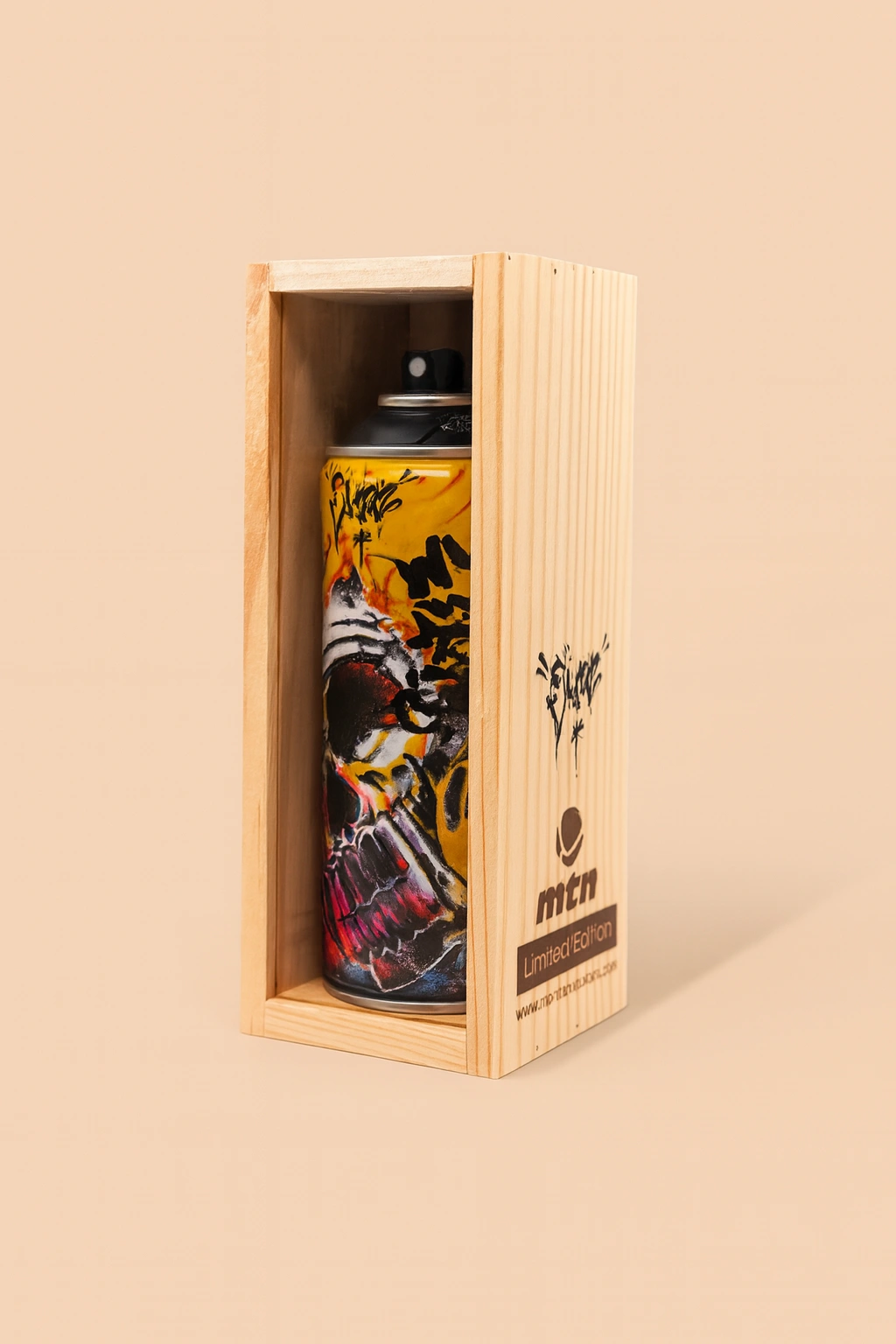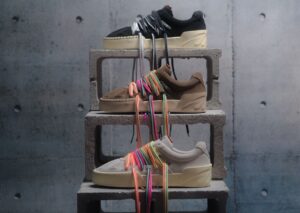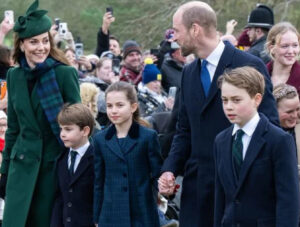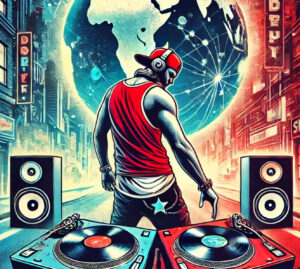Graffiti art has long existed on the fringes of the art world, often associated with rebellion, social commentary, and the vibrant urban landscape. However, as graffiti artists continue to refine their techniques and expand their creative boundaries, the medium is increasingly recognized as a legitimate and powerful form of artistic expression. Alberto Brusa, an artist known for his innovative approach to graffiti, exemplifies this transition from the streets to the gallery. His work, “Graffiti Orange” (2015), is a striking example of how graffiti can transcend its traditional context to become a significant piece of contemporary art. This blog critically explores the intricate layers of “Graffiti Orange,” delving into its visual composition, thematic depth, and the broader implications it holds for the evolution of graffiti as an art form.
The Visual Composition of “Graffiti Orange”
At first glance, “Graffiti Orange” is a visually arresting piece, commanding attention through its bold use of color and dynamic interplay of forms. The artwork, created on a wooden panel, utilizes the texture of the wood as an integral part of the composition. This choice of material is noteworthy, as it deviates from the conventional surfaces associated with graffiti, such as walls or trains. By selecting a wooden panel, Brusa invites the viewer to reconsider the context in which graffiti can exist, blurring the lines between street art and fine art.
The dominant feature of the piece is its vibrant orange hue, which not only lends the artwork its name but also serves as the focal point of the composition. Orange, a color often associated with energy, enthusiasm, and warmth, creates an immediate impact on the viewer. However, Brusa’s application of this color is far from monotonous. The orange is layered with varying intensities, from bright, almost neon tones to deeper, more subdued shades. This layering technique adds depth to the piece, suggesting movement and fluidity within the static form.
Complementing the orange are shades of blue, green, and white, which are skillfully integrated into the composition. The coolness of the blue and green tones contrasts sharply with the warmth of the orange, creating a visual tension that keeps the viewer engaged. The white, often used sparingly, acts as a highlight, accentuating certain areas and drawing the eye across the panel. This careful balance of color demonstrates Brusa’s keen understanding of color theory and his ability to manipulate it to evoke specific emotional responses.
Thematic Exploration
Beyond its visual appeal, “Graffiti Orange” is rich with thematic content, offering insights into Brusa’s artistic vision and his approach to graffiti as a medium. One of the most compelling aspects of the piece is its exploration of the relationship between color and form. Brusa does not merely use color as a decorative element; instead, he allows color to shape the composition, guiding the viewer’s perception of form and space. The abstract nature of the piece encourages multiple interpretations, inviting the viewer to engage with the artwork on a deeper, more personal level.
The use of a wooden panel as the canvas is particularly significant in the context of graffiti art. Traditionally, graffiti is created in public spaces, often without the permission of property owners, which adds an element of transgression and impermanence to the work. By contrast, a wooden panel is a private, portable surface that can be preserved and displayed in a gallery setting. This shift from public to private space reflects a broader trend in the evolution of graffiti, as artists like Brusa seek to legitimize the medium and bring it into the realm of fine art.
Moreover, the choice of a wooden panel as a canvas also speaks to themes of transformation and reclamation. Wood, a natural material that once formed part of a living tree, has been repurposed into an art object, much like how graffiti artists repurpose urban spaces to create their work. In “Graffiti Orange,” Brusa transforms a mundane object into a vibrant expression of creativity, challenging the viewer to see beauty in the unexpected.
Pushing the Boundaries of Graffiti
“Graffiti Orange” is a testament to Alberto Brusa’s dedication to pushing the boundaries of graffiti art. Through this piece, he challenges the traditional notions of what graffiti can be and where it can exist. By moving away from the streets and into a more formal art context, Brusa redefines graffiti, positioning it as a legitimate and respected form of contemporary art.
One of the most significant ways Brusa pushes these boundaries is through his approach to composition. Traditional graffiti often relies on bold lettering, recognizable motifs, and a strong connection to the urban environment. In “Graffiti Orange,” however, Brusa departs from these conventions, opting for an abstract composition that prioritizes color and texture over recognizable forms. This abstraction not only sets his work apart from more conventional graffiti but also aligns it with broader trends in contemporary art, where the focus is often on the exploration of form, color, and material.
Furthermore, Brusa’s work challenges the perception of graffiti as an ephemeral art form. While traditional graffiti is often short-lived, subject to weathering or removal by authorities, “Graffiti Orange” is a permanent piece, created on a durable surface and intended for long-term display. This shift from ephemeral to enduring art highlights the evolving nature of graffiti, as artists seek to create works that can be preserved and appreciated over time.
The Broader Implications*
Alberto Brusa’s “Graffiti Orange” is more than just a visually striking piece of art; it is a reflection of the broader trends and shifts occurring within the world of graffiti. As graffiti artists continue to push the boundaries of the medium, experimenting with new techniques, materials, and contexts, the distinction between street art and fine art becomes increasingly blurred. Brusa’s work exemplifies this transition, as he successfully integrates the raw energy and vibrancy of graffiti with the formal considerations of composition, color theory, and materiality.
The acceptance of graffiti within the fine art world also raises important questions about the commodification of the medium. As graffiti moves from the streets into galleries, it becomes subject to the same market forces that govern the sale and valuation of traditional artworks. This shift has led to a growing debate within the graffiti community, with some artists and critics arguing that the commercial success of graffiti art undermines its original spirit of rebellion and subversion.
However, others see this transition as a natural evolution of the medium, one that allows graffiti artists to gain recognition and financial support for their work. For artists like Brusa, who operate at the intersection of street art and fine art, the challenge lies in maintaining the authenticity and integrity of their work while navigating the complexities of the art market.
“Graffiti Orange” by Alberto Brusa is a powerful example of how graffiti can evolve beyond its traditional confines to become a significant and respected form of contemporary art. Through his innovative use of color, texture, and material, Brusa challenges the viewer to reconsider the possibilities of graffiti, both as an artistic medium and as a cultural expression. The piece not only highlights Brusa’s technical skill and creative vision but also serves as a broader commentary on the evolving nature of graffiti and its place within the art world.
As graffiti continues to gain recognition and legitimacy, works like “Graffiti Orange” play a crucial role in shaping the future of the medium. By pushing the boundaries of what graffiti can be, Alberto Brusa and his contemporaries are redefining the medium, ensuring that it remains a dynamic and vital part of contemporary art. Through pieces like “Graffiti Orange,” graffiti is no longer confined to the streets but is instead celebrated as a versatile and powerful form of artistic expression that can engage, challenge, and inspire audiences in new and unexpected ways.
No comments yet.








